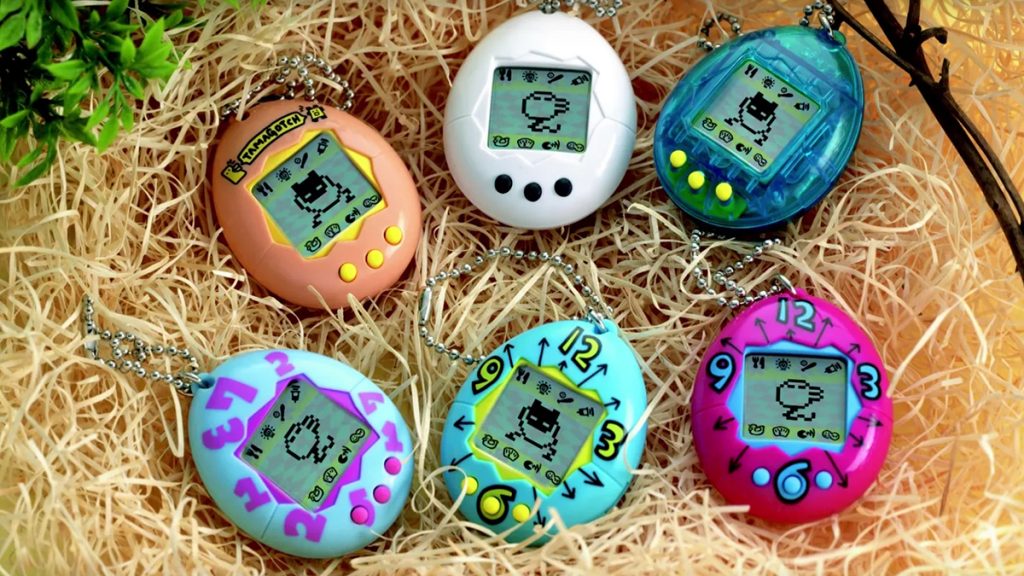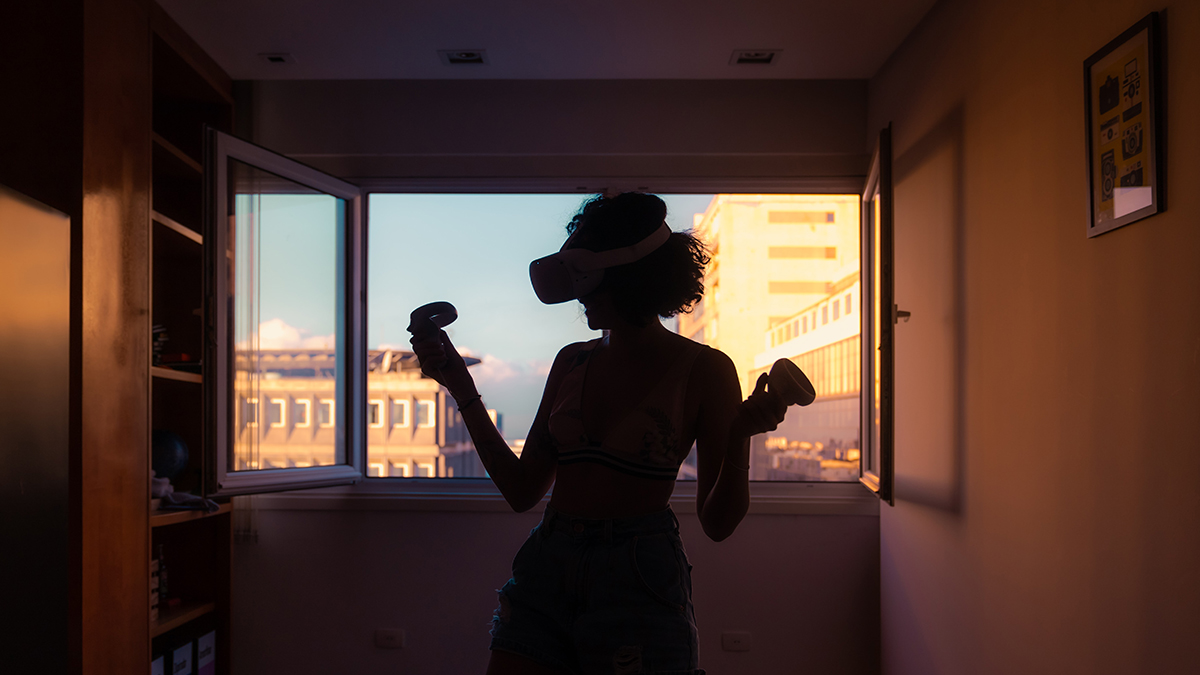(This is Part 2, which means there’s a Part 1 – which you’re encouraged to check out if you’re a ‘get the full picture’ kinda guy/gal.)
How The Hell Are We Going To Metaverse* When Everybody Thinks It’s A Game?
I’ve got quite a lot of beef with metaverse thinkers because they are convinced that this is a purely full-time digital experience. I like to ask the question about whether Squid Game or Alice in Borderland are purely physical experiences? The answer is obviously “nope”. How we connect with worlds depends entirely upon what we want to get out of the world, that much is obvious. However, what isn’t obvious is how much of the metaverse is happening outside of the digital experience?
I’m a lazy fitness freak so I’ve got my Fitbit on my wrist and the Fitbit dashboard in my smartphone so I can keep track of how I’m doing (not that great to be honest). That’s my world and it’s a physical one, right? Not quite.
Suggesting that the metaverse can only be this or that is doing the metaverse a massive disservice. If you’re a game developer and thinking about getting into the metaverse you’ve got to think about how your end users are going to connect inside your world. Tamagotchi didn’t have a problem with this in the ’90s, Fitbit doesn’t have a problem with this now, so why are we having such a problem in understanding that the metaverse is all around us? It is as much Squid Game and Alice in Borderland as it is Resident Evil VR and Roblox – it’s because all these things are entertainment-based that we cannot find a resolution as to the conflict that the metaverse provides us with.

When in truth, the Fitbit analogy is perfect, as is the Tamagotchi. If you build a world within the metaverse, you cannot assume that this world can only exist on one platform. If you open the lid on an Xbox or PS5 you will see a Tron-like world inside: does that mean that we are charting a digital world? Certainly not! The metaverse must be a phygital construct that has a foot in both camps. You get the general idea.
Make your development interoperable or at least provide the groundwork for what that might be. And let that development be cross-platform. Aren’t you sick and tired of hearing the same old crapola about some tech giant wanting to own the metaverse? Proliferation of devices means more access: young and old, able-bodied, and disabled, normal and non-neuro normal and my favorite: solvent, poverty gap and poor. If social mobility is about access, make your metaverse fully accessible.
*Yeah, I created a verb.
I Am The Law
Games have always had a very controversial relationship with the public at large. It’s tragic to assume everything that happens on this planet that is malevolent or negative somehow comes back to a kid in his or her room playing Call of Duty. That’s very unfair. But one positive that does come out of working on games for the last 30 years is being able to watch how regulation has emerged out of a PTA meeting and matured into something that is robust and standardised as policies to protect the player and the developer (and the publisher). COPPA and CEOP along with the Internet Watch Foundation are just three of a number of regulatory bodies that either come from the need to protect everyone online, or that are serviced and supported by the industries who create for people and players.
In the games industry we try wherever possible to ensure that we adhere to guidelines, so this is a great talking point for how we might divine the relationship between end-users in the metaverse and how they will be protected. How will they be protected? No one seems to know care.
Metaverse users are not just ten-year-old kids, they might be people who have accessibility issues. They might be vulnerable adults. They could also be your normal Average Joes who might be particularly laissez-faire with precious data pertaining to themselves. These are all the things that we must think about when creating a metaverse that everyone wants to live in.
So when Lockwood Publishing’s Oliver Kern says that the metaverse is mobile, I completely agree but not for the same reasons. The mobile games industry has always been entrenched in engagement retention, and the management of data: this is the perfect opportunity for the mobile industry to flex their data crunching muscles. From ads to DAU, from attribution to AARPU – the games industry, especially in mobile, has seen it all. Therefore, it is in publishing and development mastery from the games industry that we should be able to find that policy and common-sense approach to the metaverse, and which we have to get right for everyone with a stake in it. We can do it.
It’s All In The Execution
I’m repeatedly the loser in the room when I talk about digital waste. The last thing we want to do with the metaverse is to create a digital wasteland and there is already a heck of a lot of crap flying around servers worldwide calling itself the Corner Of The Metaverse or whatever: yuk. The fact is if people aren’t going to your corner of the metaverse, you’ve created a white elephant. Over the course of the last couple of years quite a few brands have created these shitty experiences that don’t really go anywhere, and they call it ‘the metaverse’. It is neither persistent, nor is it shared, but it is online.
So, is it that simple? Can we play around with roles within the metaverse through the lens of experience?
The metaverse is not this or that and I will continue to fight you all about this. It belongs to the user and it’s entirely up to them how they use it. The Sandbox, Nike, Roblox, Fitbit, hell: Tamagotchi and Aglet are the metaverse and so much more. The metaverse platforms or components that we are creating right now (let’s call them brand vehicles) are as simple as a cog that needs to be turned, a machine that needs fuel, and a belly that needs food. If we create it to great fanfare and say, “Ta-Daaaaaa: I did it!”, then move off and do something else we’ve failed in what it is that we originally planned to do (see above). For someone like me, who is always thinking about this stuff and works in this space, it is these types of metaverse failures that I love because the design constructs are already in place, they’re just completely lacking in follow-up.

Content is a playground – so couldn’t the experience therefore be fixed or reused and recycled the same way that we put our bottles into a designated bin? Yes! Just tidy the hell up. But that never really happens outside of games.
I am as passionate about not wasting quality digital experiences as I am about not wasting anything in the physical space, so it is here that we are an intersection of design versus content in the metaverse. I mentioned it very briefly above but because so many so-called metaverse pioneers are simply creating digital waste that sits on servers for the next few years (the previous Space Jam website notwithstanding), I’m just waiting to pick up these dead spaces and sell them as real estate in this beautiful, persistent place. Decentraland are doing it to a great deal of rapture, however, it is something that they need to consistently create in their own vision whereas I see myself as a bit more of an Imperator Furiosa – being resourceful and finding new ways to keep the metaverse alive (to stay alive – a bit extreme, eh?).
It leads back to the first main point of approaching the metaverse as we would games. Know your end user, create something for them. Use the tech and platforms that work for the games industry, then extend that experience into something we can all connect with regardless of whether we play Candy Crush and Call of Duty or Naked Twister or Kerplunk. Whether we’re in the space to buy something, or make something, it doesn’t matter. If we collect comics or toys, celebrate our imagination, and if we’re feeling vulnerable, make us feel safe. Allow us to connect with the metaverse with exactly the same approach to games – feed us or give us a mouth to feed. Support us, don’t give us barriers to entry.
Onboard us and watch us fly.
Kelly lives and breathes everything Beyond Games as a futurist and self-described creative badass. And as an experienced game developer, she's worked on titles such as Tomb Raider, Halo 3 and Candy Crush.






































